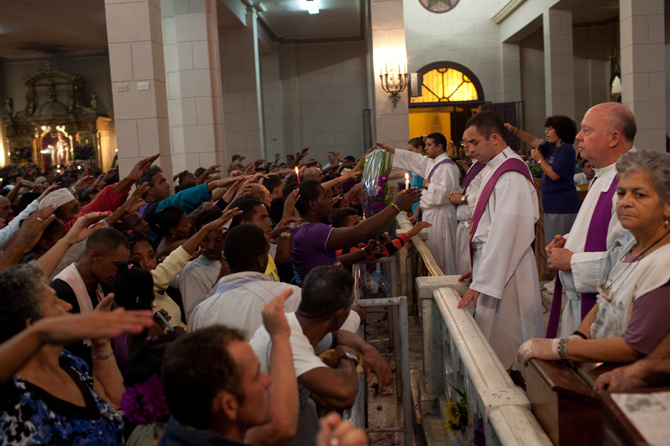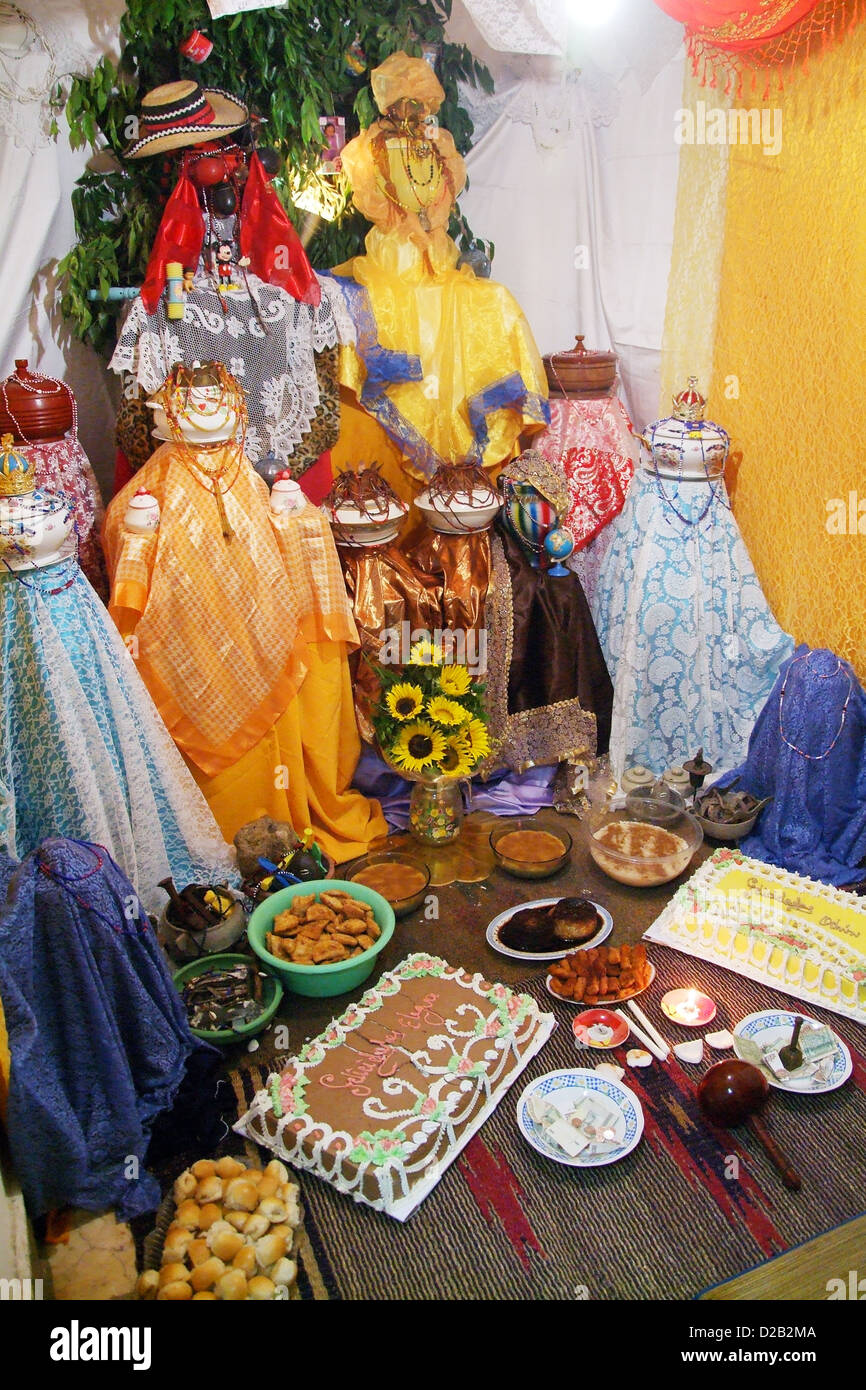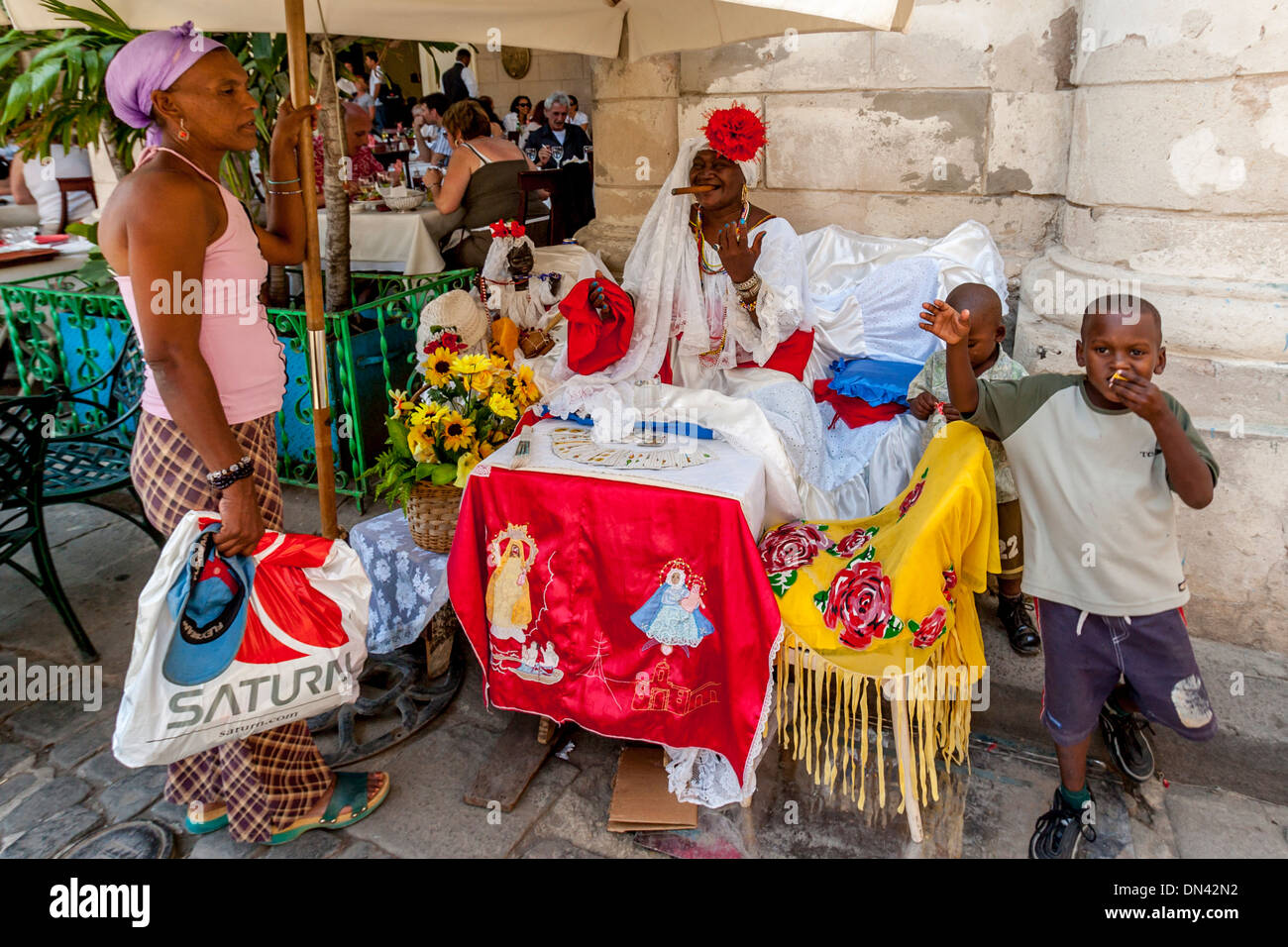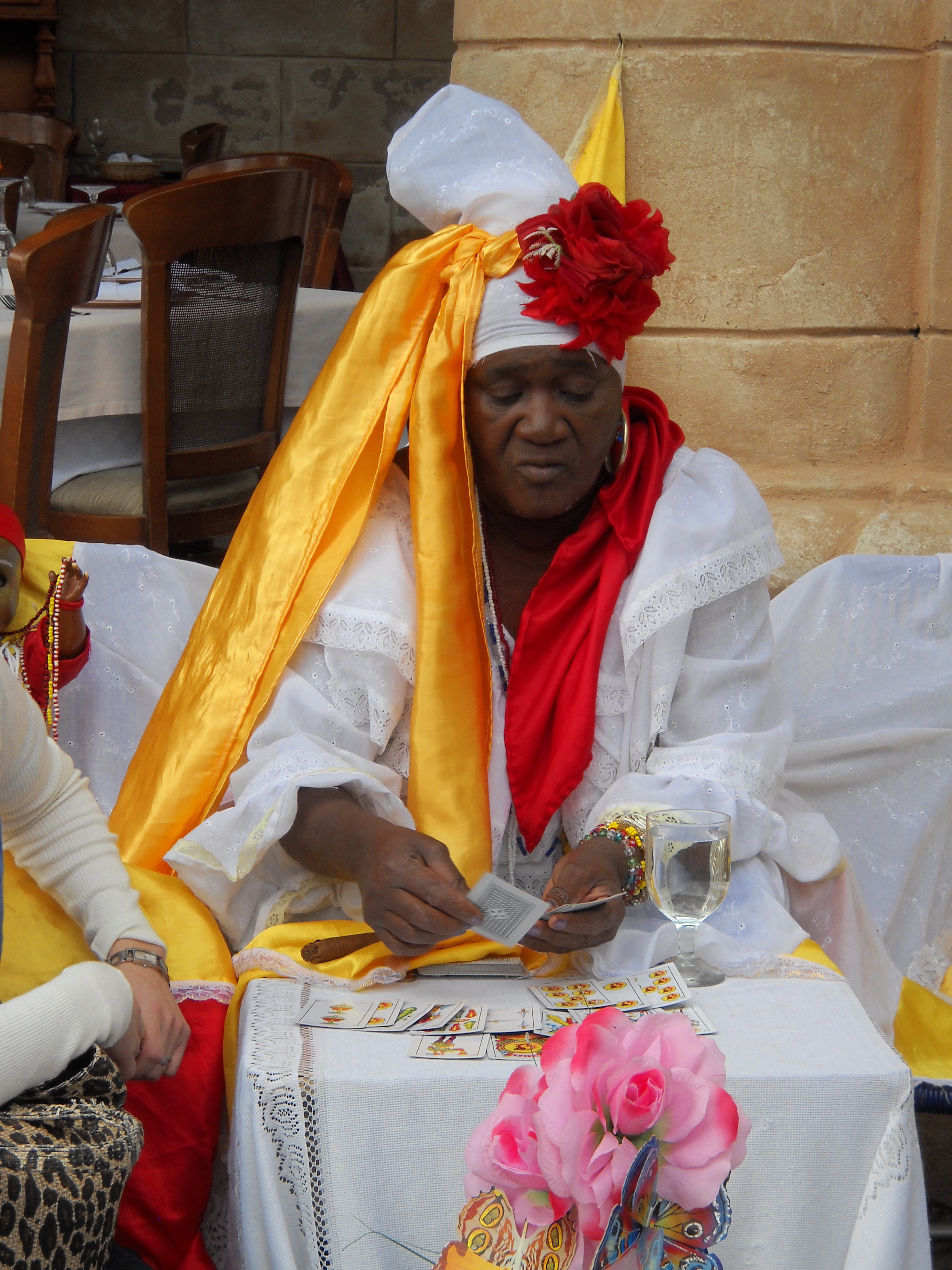Although its practiced today by people all over the world Regla de Ocha is generally defined as an Afro-Cuban religion that originated in what is today Nigeria and Benin in West Africa. Santeria is the generic name for the African-American cult based on animist religions which were brought from Africa to America by the slaves.
 Santeria Is Cuba S New Favorite Religion
Santeria Is Cuba S New Favorite Religion
The Santería religion includes many traditions of West African mainly Yoruba origin notably praying to orishas divine emissaries many of which have been formally identified with Roman Catholic saints.

Santeria religion in cuba. Religiontotal number of adherents to Santería Cubas main religious movementis unknown but may include between one-half and seven-tenths of the population. Santería was born out of necessity for the people of the Yoruba tradition who were brought to Cuba as slaves starting in the 16th century from present-day Nigeria and Benin. Santería is a syncretic religion from Cuba that incorporates elements of Catholicism with the religion of the Yoruba people from West Africa.
In order to maintain their religion Africans living on the island prayed in secret by superimposing their orishas on Catholic saints. The head of the Roman Catholic Church in Cuba Cardinal Jaime Lucas Ortega y Alamino openly opposes the practice. Their crisp pure white attire is easy to spot as it presents a stark contrast to Cubas sometimes derelict background.
Santeria relies on the wisdom of orishas. Santeria1 for despite the important role plants play in this religion studies of their use in Santeria have been few. Santeria is a religion developed by enslaved peoples throughout the Spanish Caribbean.
It emerged in Cuba during the 17th century and has been embedded in Cuban society ever since. We explore what continues to attract people to the religion generations after it was brought to Cuba by African slaves. Santeria is in fact not one set of beliefs but a syncretic religion which means it blends aspects of a variety of different faiths and cultures despite the fact that some of these beliefs might be contradictory to one another.
The African origins of Santeria stem largely from the Yorubas of southwestern Nigeria but also include contributions from other neighboring West African peoples sharing similar or. A religion started in secret. These days its far more prevalent than Catholicism on the islandSanteros outnumber Catholics by 8-1.
Cuba is still the religious center of Santería but the faith has spread to many. Its roots are in the Yoruba traditions of present-day Nigeria but through the influence of Catholicism it exists as one of the most syncretic religions in the world. It has roots especially in.
One of the fastest-growing religions in Cuba Santería known formally as the Regla de Ocha or the religion of Lucumí has endured through centuries of oppression first by Spanish slave-owners then by imperial rule and most recently by Castros anti-religious government. Similarly swindlers abound in this religion and many santeros and santeras have been accused of exploiting other people financially. Santería is a syncretic religion based significantly in the traditions of the Yoruba and incorporating elements of Catholicism.
Santeria is a fusion of Catholic practices and African folk beliefs. An estimated 70 percent of Cubas 11 million people perform some type of Afro-Cuban practice including many of the countrys Catholics. From what we could observe the Santería religion crosses race age and gender.
Priests in training wear all white for a year before officially becoming a Santero or a Santería priest. The word Santería comes from Spanish and loosely translates as devotion to. Santeria combines influences of Caribbean tradition West Africas Yoruba spirituality and elements of Catholicism.
Most practitioners of Santería prefer the name Regla de Ocha or the Lucumí religion. Today roughly 70 percent of Cubans observe one or more Santeria or other religious practices based in an African tradition. Santería is widely practiced in Cuba.
It combines animistic and pantheistic aspects with ancestor worship and Catholicism and through it the gods of the Yoruba pantheon are syncretized with the Catholic saints. Today the Santería it is a common religious practice in Cuba and other Caribbean countries. Elements of Santería and its African roots permeate Cuban culture including by.
 The Rise Of Santeria In Cuba Cnn Video
The Rise Of Santeria In Cuba Cnn Video
 Havana Cuba An Altar Of The Main Cuban Santeria Religion Stock Photo Alamy
Havana Cuba An Altar Of The Main Cuban Santeria Religion Stock Photo Alamy
 A Fortune Teller Of The Santeria Religion Plaza De La Catedral Old Stock Photo Alamy
A Fortune Teller Of The Santeria Religion Plaza De La Catedral Old Stock Photo Alamy
The American Seekers Who Found Santeria Notes On A Grassroots Spiritual Tradition From Cuba The New Modality
 In Cuba Santeria Flourishes Two Decades After Ban Was Lifted The Groundtruth Project
In Cuba Santeria Flourishes Two Decades After Ban Was Lifted The Groundtruth Project
 Santeria Wikipedia Bahasa Indonesia Ensiklopedia Bebas
Santeria Wikipedia Bahasa Indonesia Ensiklopedia Bebas
 Cuba S Religious Ajiaco Stew Lahabana Com
Cuba S Religious Ajiaco Stew Lahabana Com
 Cuban Santeria Tradition And Practices
Cuban Santeria Tradition And Practices
Yoruba Religion In Cuba I See White People Lorrie Graham
 Cuban Santeria Tradition And Practices
Cuban Santeria Tradition And Practices


:max_bytes(150000):strip_icc()/santeria-women-in-the-our-lady-of-the-regla-church--in-havana--cuba-955821024-5c64ab1ec9e77c000159cb46.jpg)
Comments
Post a Comment